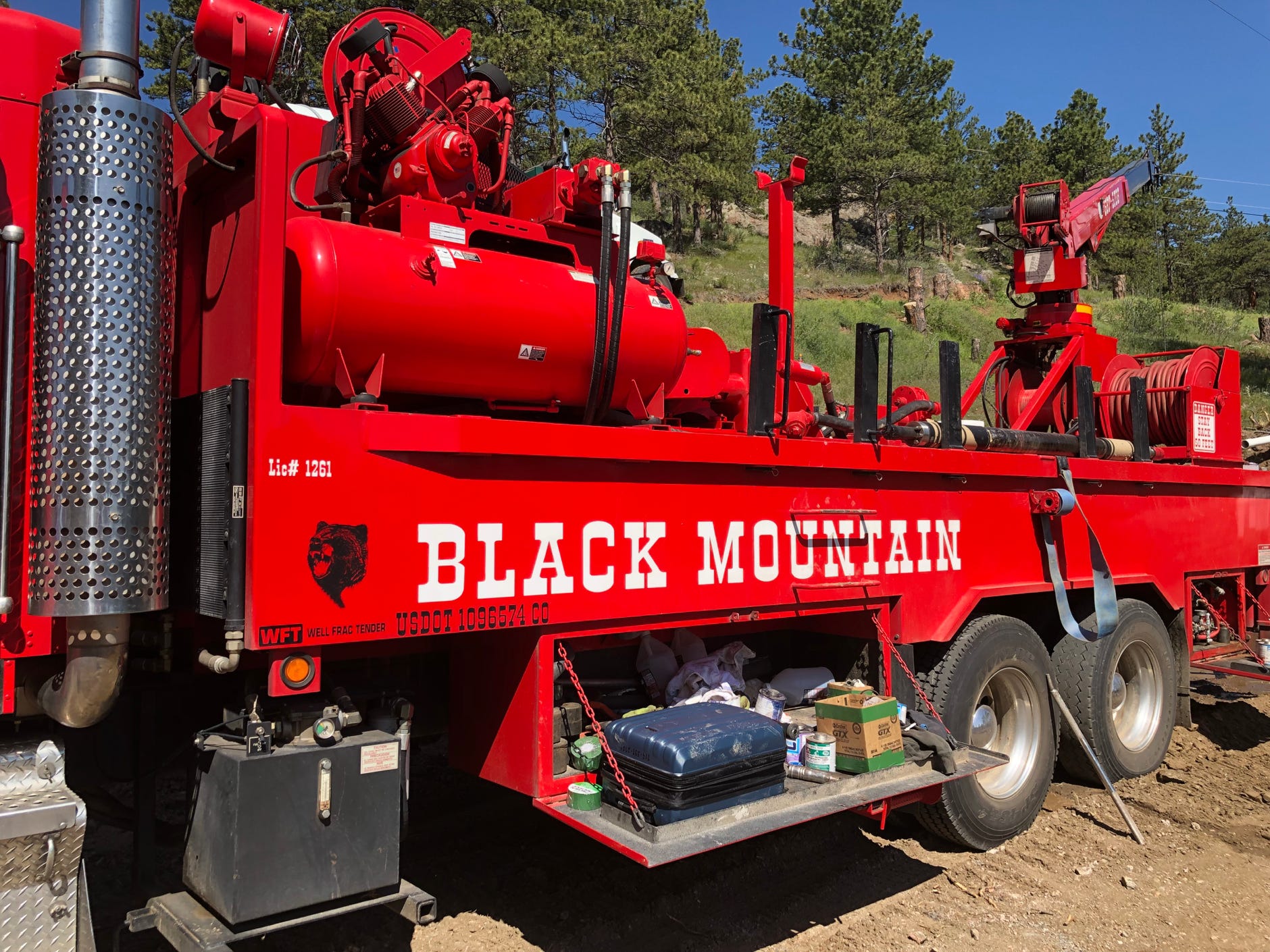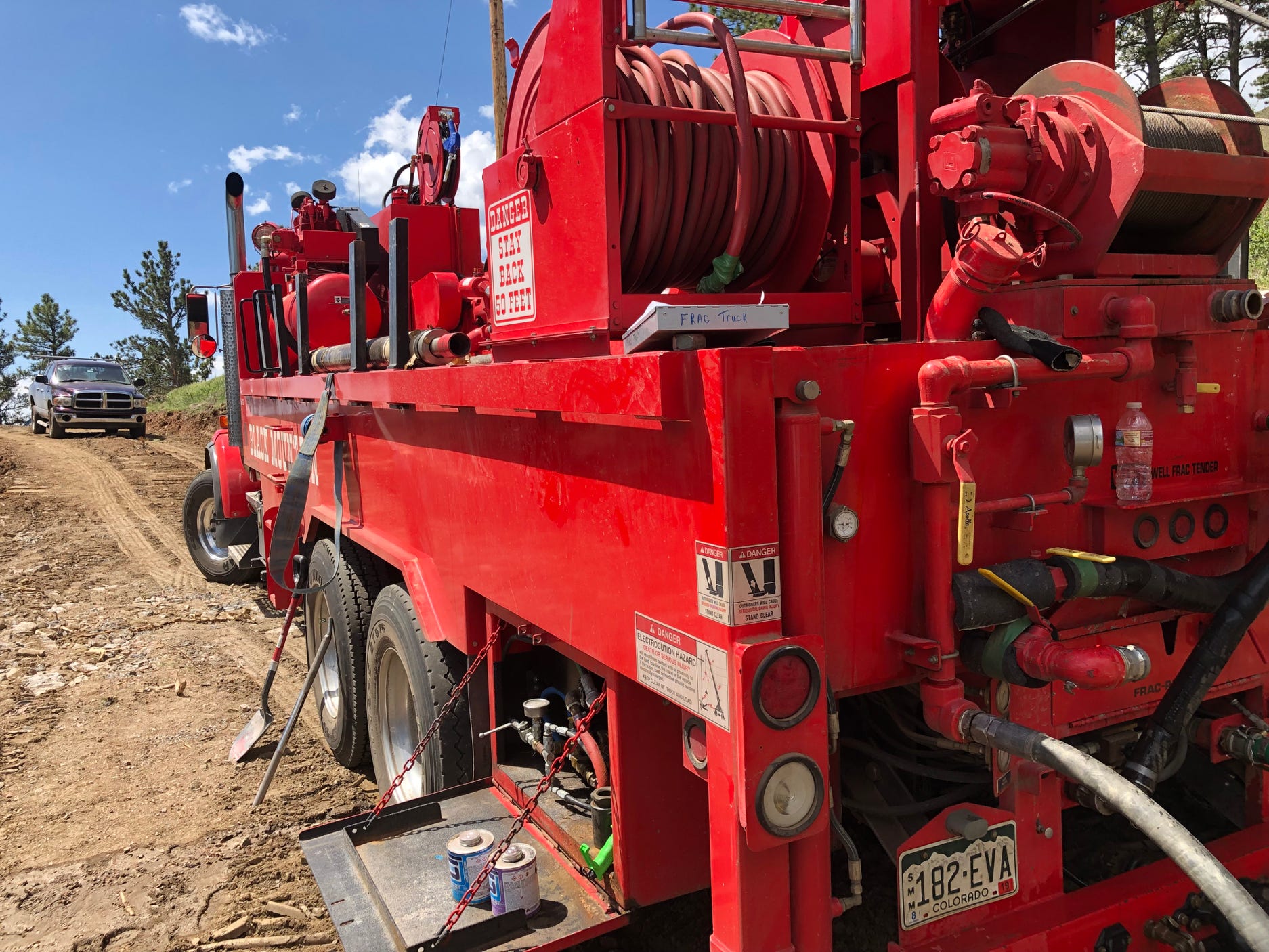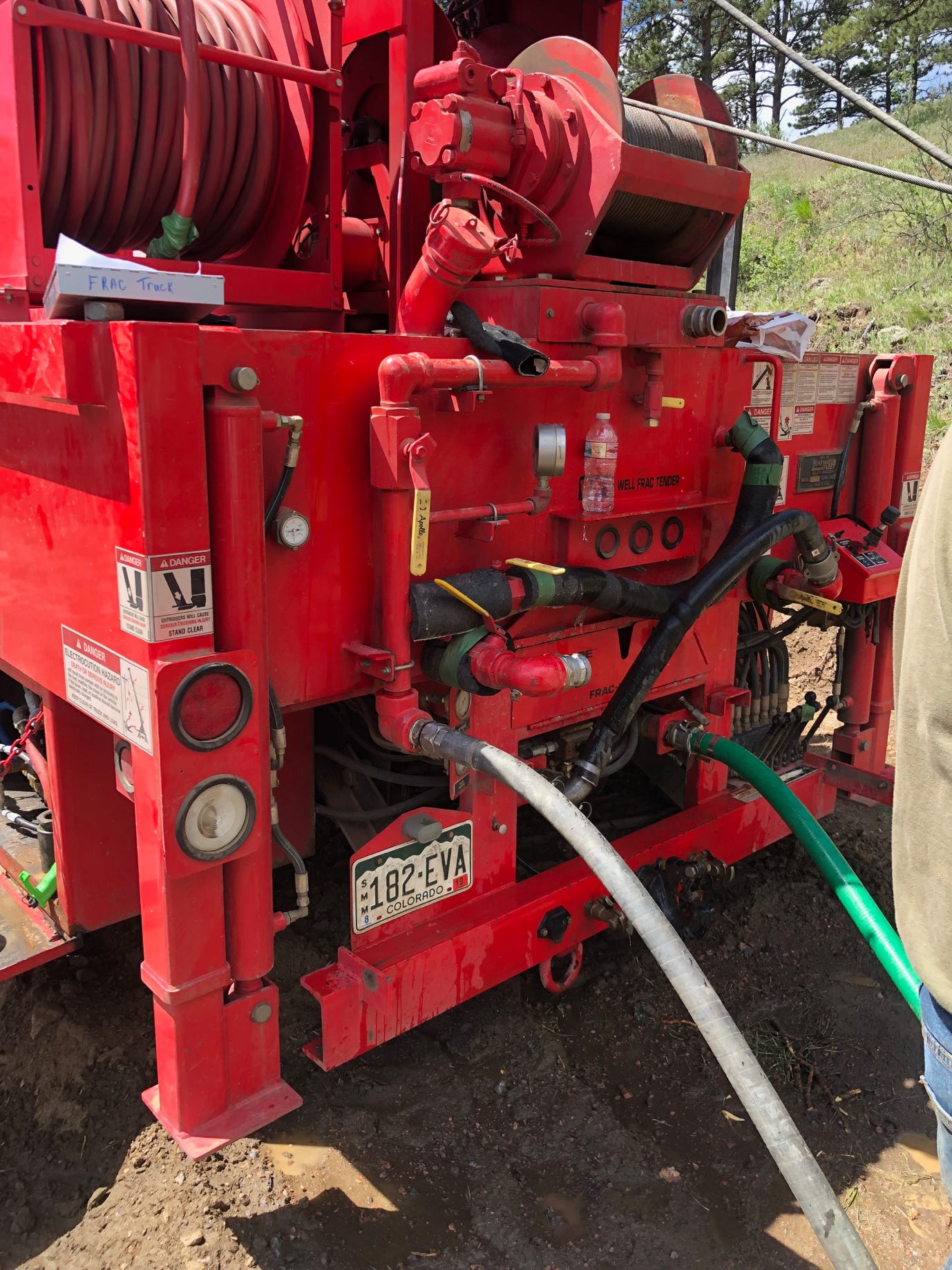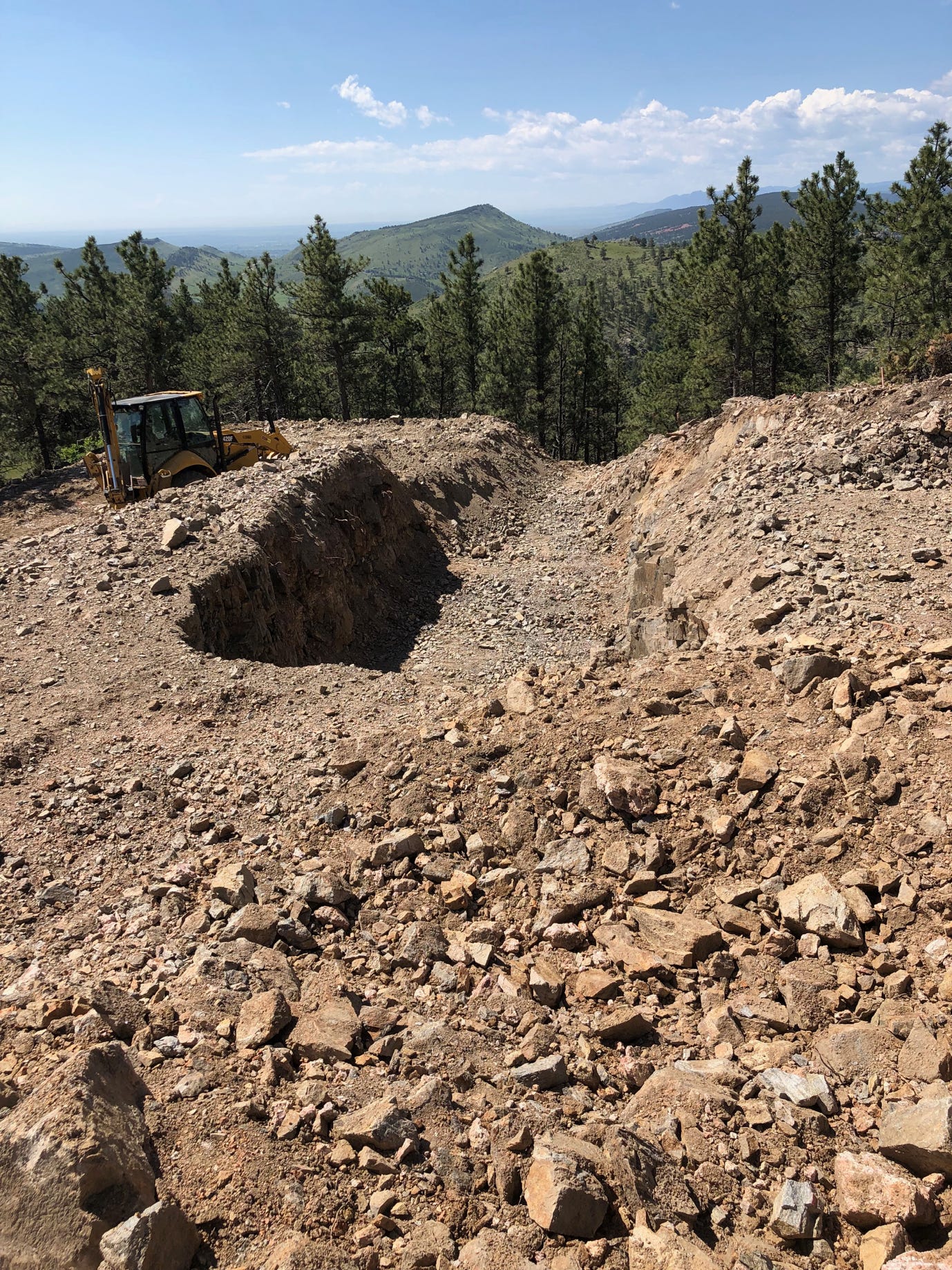The well still wasn’t producing much so it was time for some extreme measures! Yep water wells can be hydraulically fractured. The process is a little different than with oil wells, because they’re so much shallower. There is no need to inject proppant (The Greatest Oilfield Innovation of the 21st Century) into them since there isn’t enough pressure on the rock to close the fractures back up.
That is the biggest rig to come up yet! It’s about 7 feet longer than the drill rig. The main thing this has got is a series of piston pumps, with the first pumps output being the input of the 2nd and the 2nd’s the input to the 3rd. This lets the 3rd and final pumps output go to over 3,000 PSI. This well fractured at about 1,800 PSI. There are 3 pay zones - 300’, 480’ and 1,200’. Each was fractured. An inflatable cylinder, that black tube on the rig just above the loose blue strap, is a spare. The black is rubber and is inflated with hydraulic fluid to seal the well above the fracturing water. It was placed just above each of the pay zones and the water was pumped in until the pressure suddenly dropped, which is the sign that the rock fractured.

The front end of the rig. You can just see the series of pumps starting behind the air compressor tank and going to the rear of the rig.

Here’s an overall shot of the rig so you can see just how long it is!

The business end of the rig. The grey hose is the high pressure one that’s delivering water down the well. The green one is running over to an auxiliary water tank. The part of the rig that has “Black Mountain” on it is a 2,500 gallon water tank, but that’s only about half of what needed. There was a temporary plastic tank to hold the other 3,000 gallons of water.

Moving to the south end of the site, we can see the now completely excavated swimming pool. Why is south end of it wide open? That’s where the drain that collects any splashes and the inevitable seepage from the pool goes.